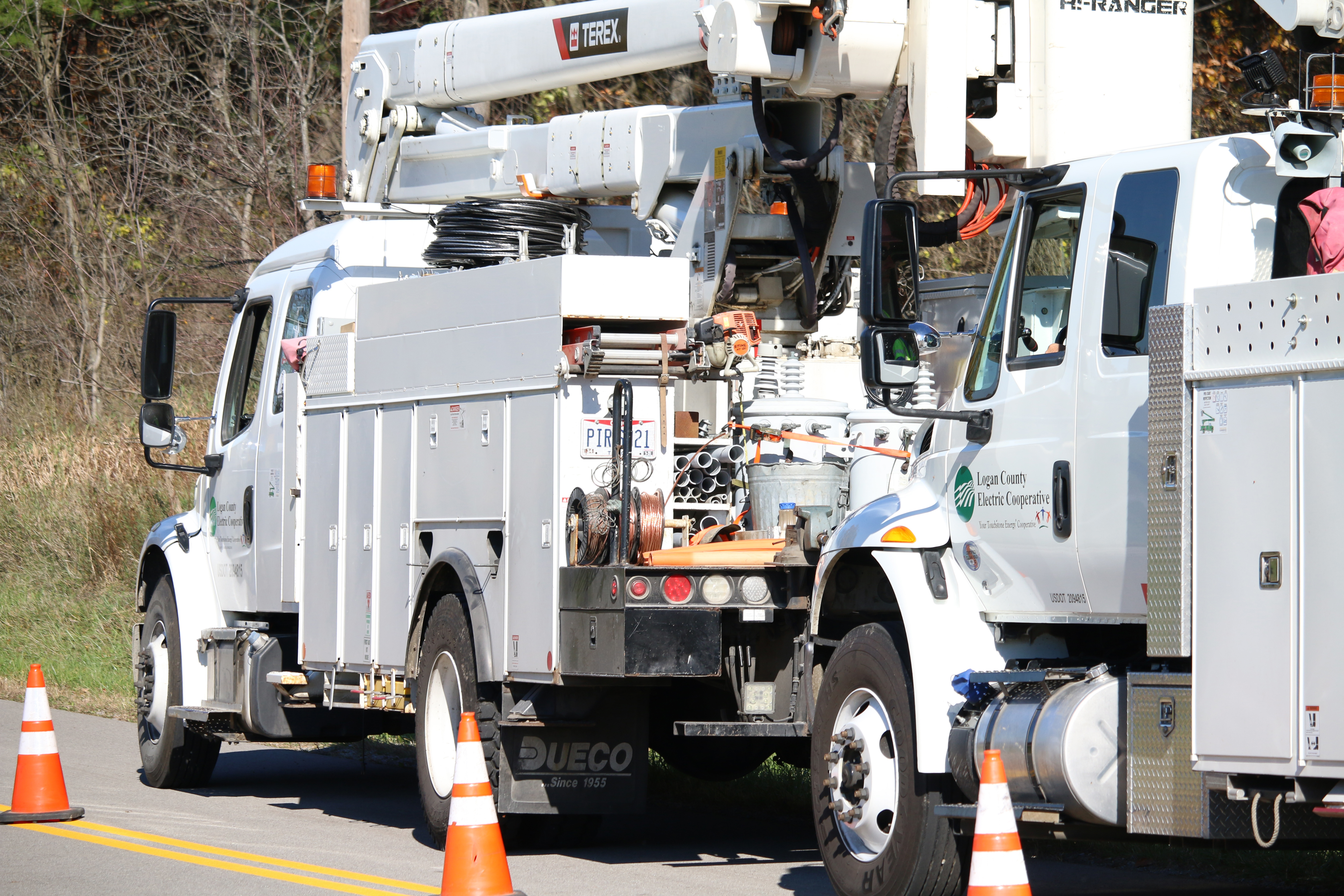Safety Minute: What to Look for Before and During Utility Equipment Operation

Terex bucket trucks and digger derricks are essential tools used to perform work on and around high-voltage energized power lines in some of the most extreme weather conditions. The operators of utility trucks have the responsibility to use the machinery in a safe manner when they are on the job site. Operator manuals contain specific checklists that must be followed before operating the equipment.
“Performing a pre-operation inspection allows the operator to identify safety issues before operation and identify problems before they turn into larger more costly repairs,” Jason Julius with Terex Utilities Training and Tech Support said.
The following outlines steps operators must take before jumping in the driver’s seat as well as steps to take before arriving and while operating at the jobsite.
Perform Equipment Walk Around
The operator must examine the equipment to make sure there is nothing visibly wrong with the machine. Any deficiencies must be evaluated to determine if the machine is safe before further use is allowed.
Conduct a walk-around visual inspection and look for damaged components.
Look for cracks or corrosion on any part of the unit.
Watch for excessive wear on the unit.
Check the condition and cleanliness of the insulated portions of the boom.
Check the fuel gauge to make sure there is enough fuel.
Check the tires for proper inflation.
Look for worn or illegible control labels, warning decals, or placards.
Ensure that loose objects are properly stored on the equipment.
Check the hydraulic oil level in the tank and look for any leakage on hydraulic lines.
Look for loose, deformed, missing bolts, pins, fasteners, locking devices or covers.
Inspect the load line and hook for damage if equipped. Verify the hook has a working safety latch.
Inspect the controls of a digger derrick or aerial device and do not use it if the controls are malfunctioning.
If you are operating an aerial device, it is important to set the outriggers and raise and lower the boom through a complete cycle every day using the lower controls.
Check the functionality of all interlock devices.
Inspect, maintain, and wear fall protection. Attach fall arrest lanyard to anchor provided at boom tip.
Verify Operator’s Manual is on the vehicle available to the operator.
Survey the Site Conditions
Prior to leaving for the field, operators need to call 811 to have all underground utilities clearly located before using a digger derrick to dig holes in the work area. When the operator gets to the job site, they must survey the area where the equipment is being used and be aware of soft ground, ditches, drop offs, holes, debris, overhead obstructions and powerlines, underground utilities, nearby stored fuels, and toxic dust or gases present in the area.
Know Safe Work Practices While Operating
Do not place the boom or auger in open lanes of traffic if the equipment is being used on the side of a road. If an operator is using a piece of equipment and hears unusual noises such as grinding, cracking, or grating they should stop using the equipment immediately until the issue has been resolved.
“If the deficiency effects the safe operation of the unit, it must be taken out of service,” Julius said.
The operator needs to be trained and qualified to operate the equipment, as well as trained and qualified to safely perform the task assigned by their employer. The operator is not only in control of running the equipment properly but also ensuring that the equipment is being used in a safe manner.
Photo Courtesy: Logan County Electric Cooperative

.png?sfvrsn=cfc0900d_0)